
What are the current recommendations for the use of corticosteroids in the treatment of migraine? Is this a therapy primary care clinicians might consider?

What are the current recommendations for the use of corticosteroids in the treatment of migraine? Is this a therapy primary care clinicians might consider?

No double-blind, randomized controlled studies of the effectiveness of vertebroplasty have been performed. However, this reflects less the effectiveness or safety of the procedure than it does the difficulty involved in conducting randomized controlled trials of any treatment for a pain disorder.

Low back pain is a widespread and costly complaint that affects virtually all Americans at some point in their lives. After the common cold, it is the second most frequent cause of work absence in the United States.
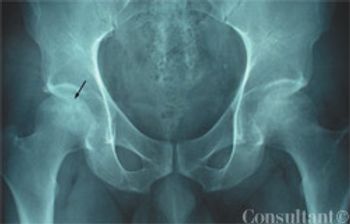
Pain in the right hip that had gradually worsened within the past month prompted a 42-year-old man to seek medical attention. The pain was aggravated by lifting the right leg and by walking; it was relieved by ibuprofen. The patient denied recent trauma, fever, overexertion, numbness, leg weakness, and back pain. He had had a discectomy for a herniated lumbar disk several years earlier. There was no history of sickle cell disease or allergies. He reported occasional alcohol use.
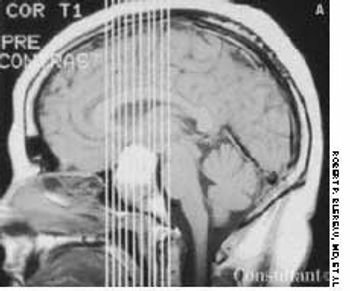
After being hit on the head during a football game, a 16-year-old experienced several seconds of complete vision loss in the left eye. A few days later, he noticed the onset of blurred vision in the same eye, which progressively worsened over several weeks.
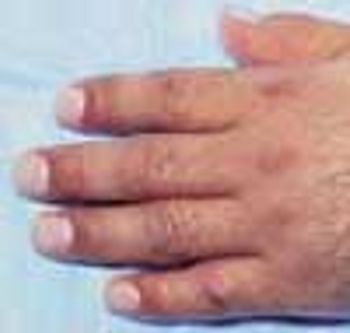
A 44-year-old man sought relief from severe pain, swelling, and restricted radiocarpal and digital motion of his left hand. Four months before, he had suffered a fracture of the distal radius metaphysis (Colles' fracture), which was treated by closed reduction with long-arm cast immobilization for 6 weeks.
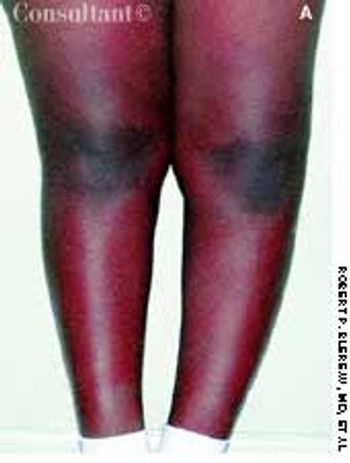
A 16-year-old African American boy complained of exertional pain below his left knee that severely limited his ability to participate in sports. The patient had had bilateral bowed legs until his early school years, when the right knee straightened. For the past year, exertional pain had been present below the left knee in the epiphyseal area.
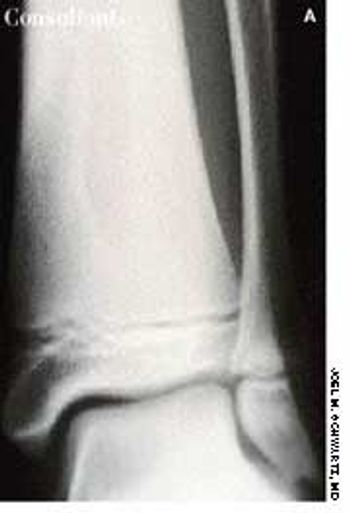
A 15-year-old boy had been experiencing pain in his distal left leg for 7 months. There was mild swelling, and an x-ray film of the lower leg revealed a sharply marginated, vertically oriented, tubular lucency in the metaphysis of the tibia (A). There was no cortical destruction, periosteal reaction, or pathologic fracture. An MRI at high field strength was performed to narrow the differential diagnosis.
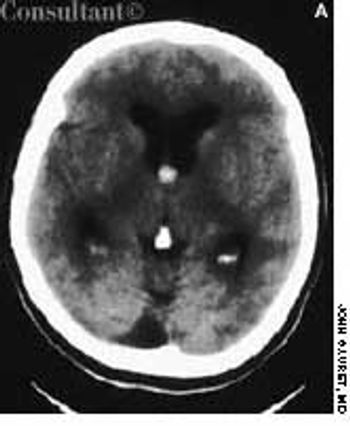
After suffering with recurrent, diffuse, daily headaches for 4 months, a 51-year-old woman sought medical advice. She described the headaches as severe and said they were affected by the position of her head, particularly when bending forward. She also reported episodes of transient numbness on her right side. No syncope was noted, and the patient denied nausea and vomiting.
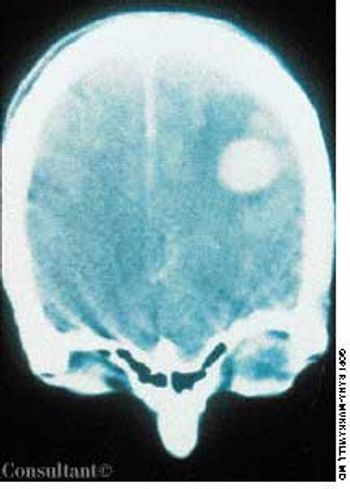
A 32-year-old man who had HIV disease complained of headache, fever, and weakness on his right side. His history included intravenous drug use, Pneumocystis carinii pneumonia, and mucocutaneous candidiasis.
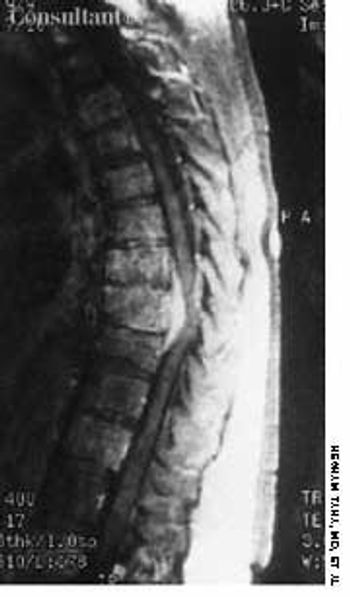
Back pain and weakness of both legs had bothered this 60-year-old woman for 1 week. Left breast cancer, stage 2, had been diagnosed 2 years before, and subsequently she underwent a lumpectomy followed by chemotherapy and radiation therapy.
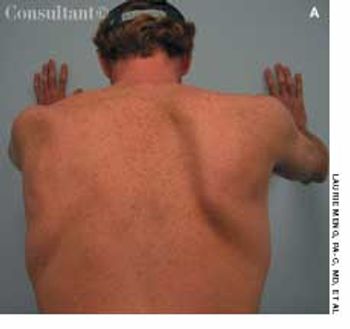
Several hours after he had installed ceramic tile, a 33-year-old man experienced muscle spasms and felt pressure in his right shoulder. He denied previous injury to the area.
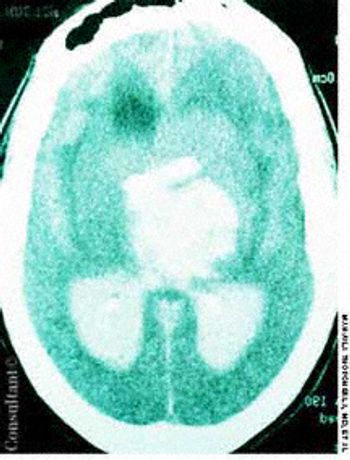
A 60-year-old comatose man was brought to the emergency department (ED). He had a history of diabetes, hypertension, and alcohol abuse. Relatives reported that the patient was noncompliant with his antihypertensive medication regimen.
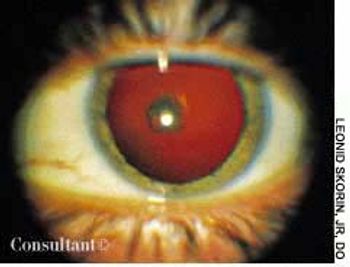
Dull, constant, bifrontal headaches were the chief complaint of a 28-year-old woman who was referred for her first ophthalmologic examination. She had no specific ocular symptoms, but her primary care physician wanted to rule out an ophthalmologic cause for the headaches.
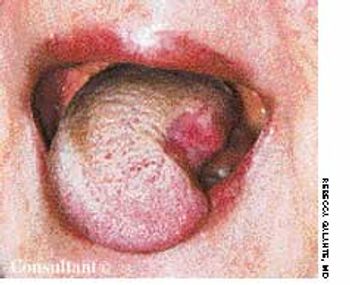
The initial complaint of a 79-year-old woman was of mild headache, neck pain, and sore throat. She had a history of hypertension, diabetes mellitus, and heavy cigarette smoking. Examination by an otolaryngologist, which included laryngoscopy, revealed no abnormalities. Three weeks later, the patient's throat and neck pain became more severe. She had no arthralgias, visual loss, fever, or worsening head pain.
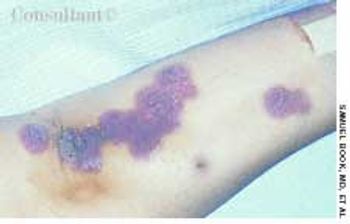
A 51-year-old woman with severe migraines sought evaluation of a dozen round black macules on her hands, forearms, and legs. A few of the lesions had first appeared 1 year earlier; the remainder had erupted since then.
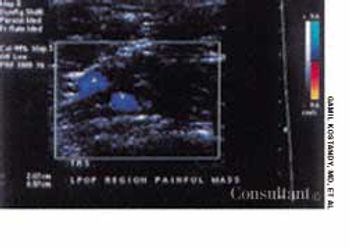
A 47-year-old woman complained of pain and swelling of the right knee of 3 days' duration. Positive fullness of the popliteal area with no pulsations was discerned. Doppler ultrasound showed a 2.5 cm × 1.5 cm cystic structure in the right popliteal region; this confirmed the diagnosis of a Baker's cyst.
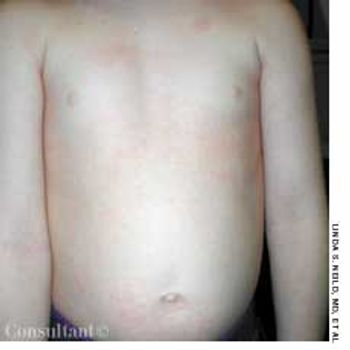
This 6-year-old boy was brought to his physician for evaluation of a rash. The child had been running a fever and, for the past 48 hours, had been complaining of a sore throat, headache, and abdominal pain.
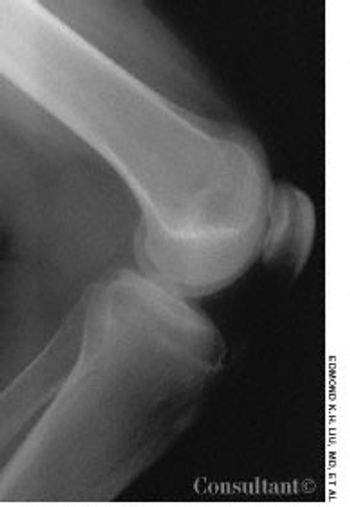
For the past 3 years, a 17-year-old boy had experienced intermittent pain in the right knee. The pain worsened when he went up and down stairs, ran, jumped, or knelt.
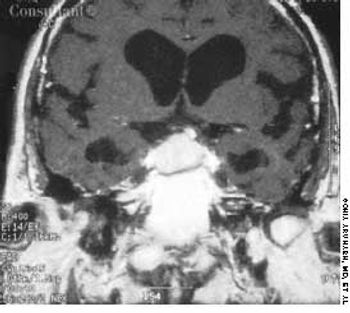
A 40-year-old woman with a history of amenorrhea complained of recent headaches and galactorrhea for the last 6 months. A neurologic work-up revealed bitemporal hemianopia, and a radiograph of the skull suggested an enlarged sella turcica. A large pituitary adenoma disclosed by an MRI and a serum prolactin level of 360 µg/L led to a diagnosis of prolactinoma.
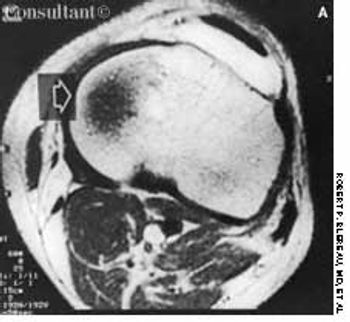
A 91-cm (3-ft) fall into a bilge sparked significant pain in the left knee of a 41-year-old man who landed on his left leg. Three days later, physicians found minimal effusion in the knee and medial collateral ligament tenderness.
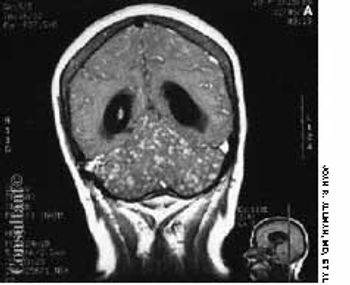
A comatose 29-year-old woman was brought to the emergency department. Her family reported that she had been well until 4 days earlier, when headache and fever developed. She went to another hospital at that time and was told she had an abscessed tooth. She was given erythromycin, and the tooth was extracted the following day. The patient's headache and fever worsened; a sore throat also developed, and a rash appeared on her trunk, arms, and legs. The family denied any HIV risk factors, unusual medical history, recent travel, and exposure to persons with infectious diseases.
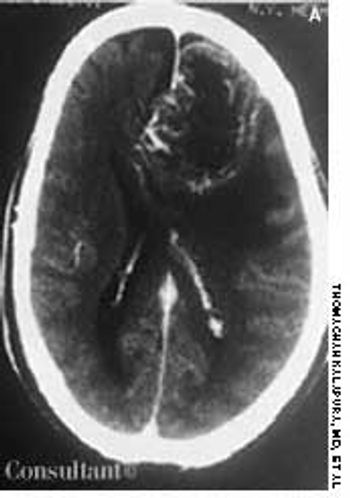
A 57-year-old man was brought to the emergency department with severe bifrontal headache, which he had had for 3 weeks. Family members reported that the patient exhibited episodes of confusion and loss of recent memory since the onset of the headache.
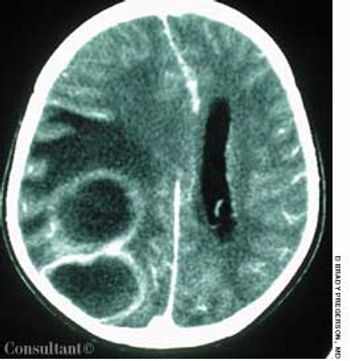
While playing outside, a 23-month-old girl became sleepy and difficult to arouse. The mother brought her daughter to the emergency department (ED); posturing and a dilated and fixed right pupil were noted. The child was hospitalized.
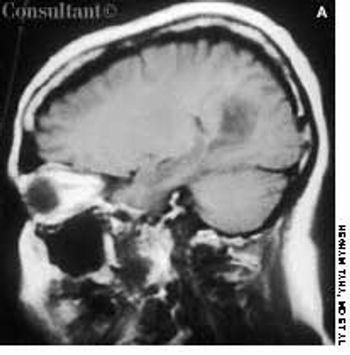
Headache and vomiting suddenly developed in a 41-year-old woman who was 16 weeks pregnant. The next day, she suffered an episode of tonic-clonic seizures associated with a 15-minute loss of consciousness.